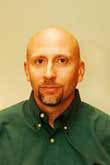Over the course of a year, the media-driven education reform debate has evolved into an often repeated narrative expressed by the new reformers--Secretary of Education Arne Duncan, Bill Gates, Michelle Rhee, and a growing chorus of celebrities--that has risen to the level of truth with few highlighting that the story just doesn't hold up against evidence.
At the center of the new reformers' message are a false dichotomy and a powerful refrain--"the status quo." The false dichotomy fulfills the public's need for a simple good v. evil plot; we are always game for an "us v. them" approach to anything.
Ironically, the reformer's dichotomy is both misleading and inherently contradictory, if we look carefully at their characterization of the status quo and their insistence that the new reformers are in a battle with defenders of the status quo.
The nature of the false dichotomy is reflected in President Obama's and Secretary Duncan's responses to the civil rights framework presented by the National Opportunity to Learn (OTL) Campaign, a coalition of organizations committed to civil rights:
To these critics, Obama sent this message on 29 July 2010: "... But I know there's also been some controversy about the initiative [Race to the Top]. Part of it, I believe, reflects a general resistance to change ; a comfort with the status quo [emphasis added]. But there have also been criticisms, including from some folks in the civil rights community, about particular elements of Race to the Top."
Just two days before, Secretary Duncan offered a similar refrain: "We have to challenge the status quo [emphasis added]--because the status quo in public education is not nearly good enough--not with a quarter of all students and, almost half, 50% of African-American and Latino young men and women dropping out of high school."
The status quo, then, that the new reformers are presenting with little resistance includes some basic characteristics that are repeated by Duncan, Gates, and Rhee while also being reinforced by the media and celebrities claiming education as their cause. The new reformer narrative goes like this:
Based on international test score comparisons, public schools are failing children and U.S. economic competitiveness because those schools are bogged down with "bad" teachers being protected by the teachers unions and because the U.S. has failed to identify high standards and rigorous tests in order to hold those schools and teachers accountable for their failures.
If this status quo were true--and it is not--we should be truly disturbed by the other claim of the new reformers, expressed directly in a blog posting at The Huffington Post, titled "New Book Takes Aim at Ed Reformers and Status Quo Defenders," about Rick Hess's book, praised as a criticism of the new reformer movement:
Status quo defenders? Who would defend that status quo and for what purpose?
Who in this mythical education establishment wants children to fail? What sort of person would defend the abysmal status quo identified by the new reformers?
Just as the new reformers are misleading the public about education reform, they are also misrepresenting their critics, demonizing them, in fact, by associating any rebuttals as defending the status quo--or as the president himself stated, being comfortable with failing children.
So let's step
back for a second and reconsider the new reformers' narrative, first by
clarifying just what the status quo of U.S. public schools constitutes.
The status quo of the struggling public education system is not a crisis. The central problems we are facing in schools are historical patterns--student achievement being strongly correlated with out-of-school factors (such as poverty); disproportionate drop-out rates among marginalized populations of students; inequity of teacher assignments to the disadvantage of students living in poverty, students of color, and ELL students. The most recent fact of the status quo of schooling is the crippling bureaucracy faced by schools during the past 30 years of accountability (ironically, the exact components of which are at the center of the claims of reform coming from the new reformers).
(Note: You can view every article as one long page if you sign up as an Advocate Member, or higher).





